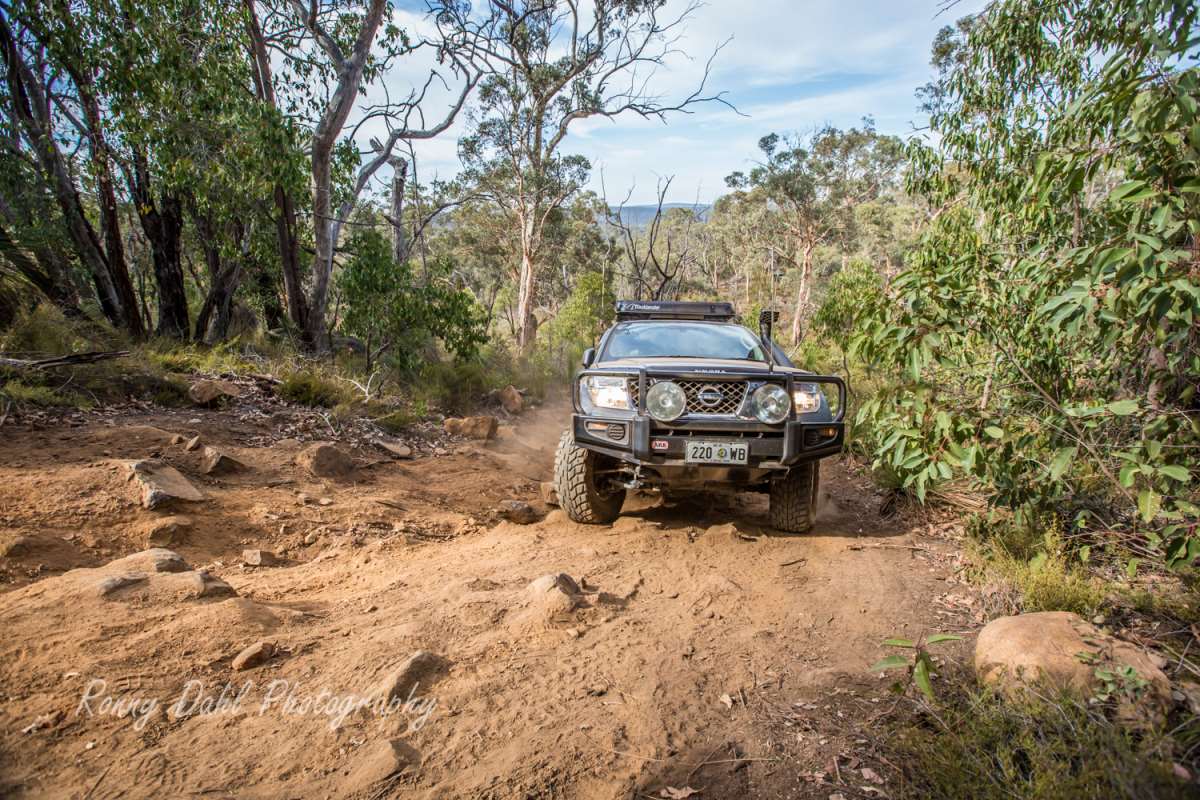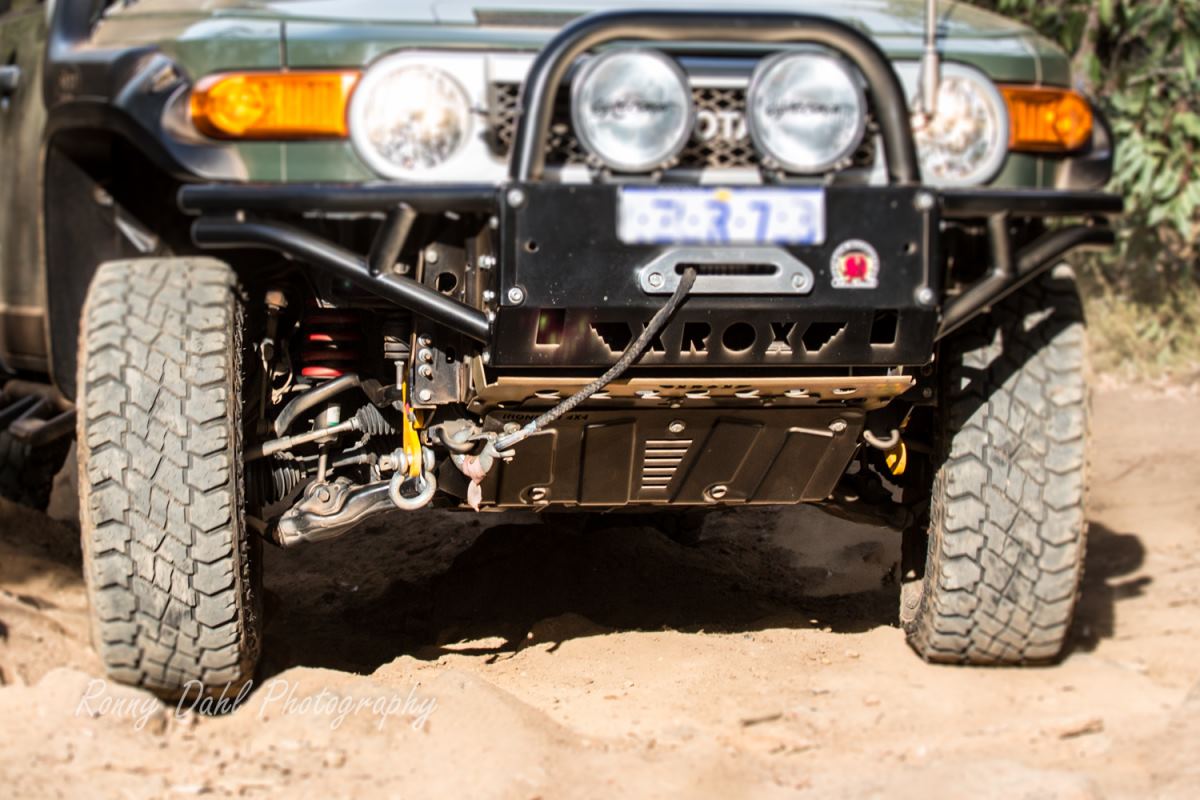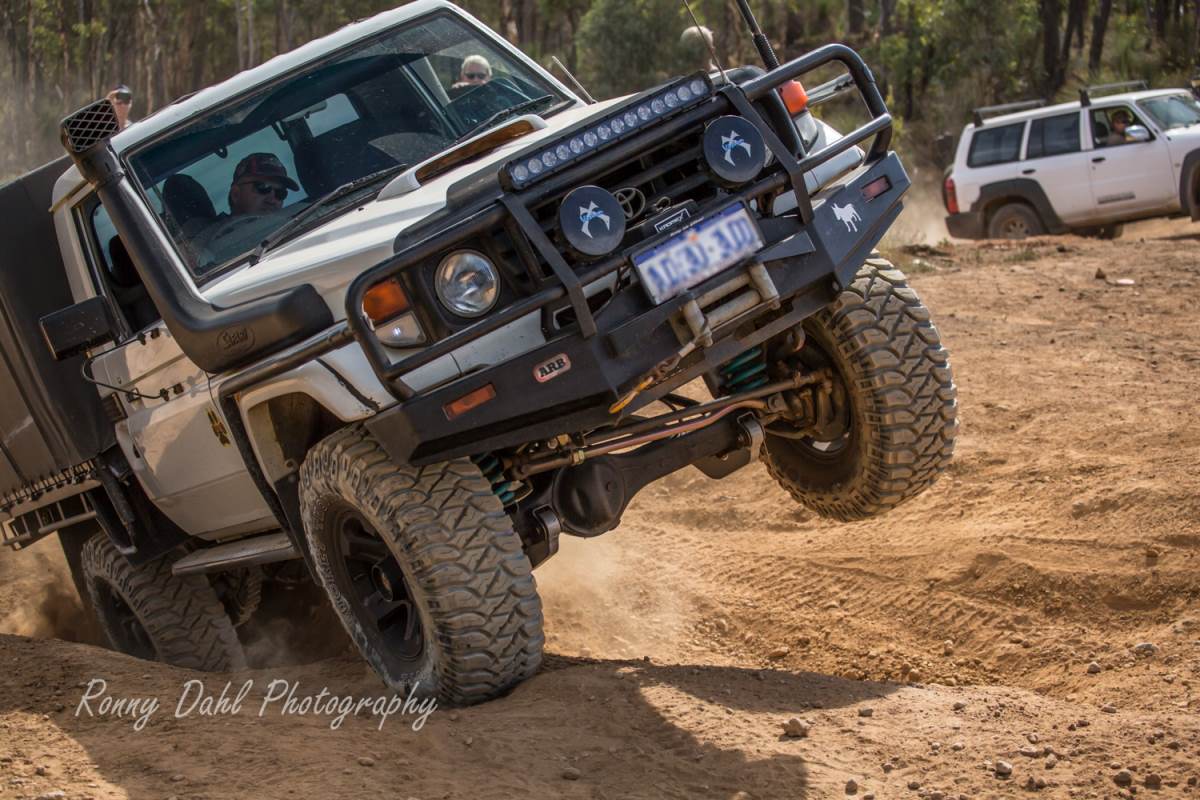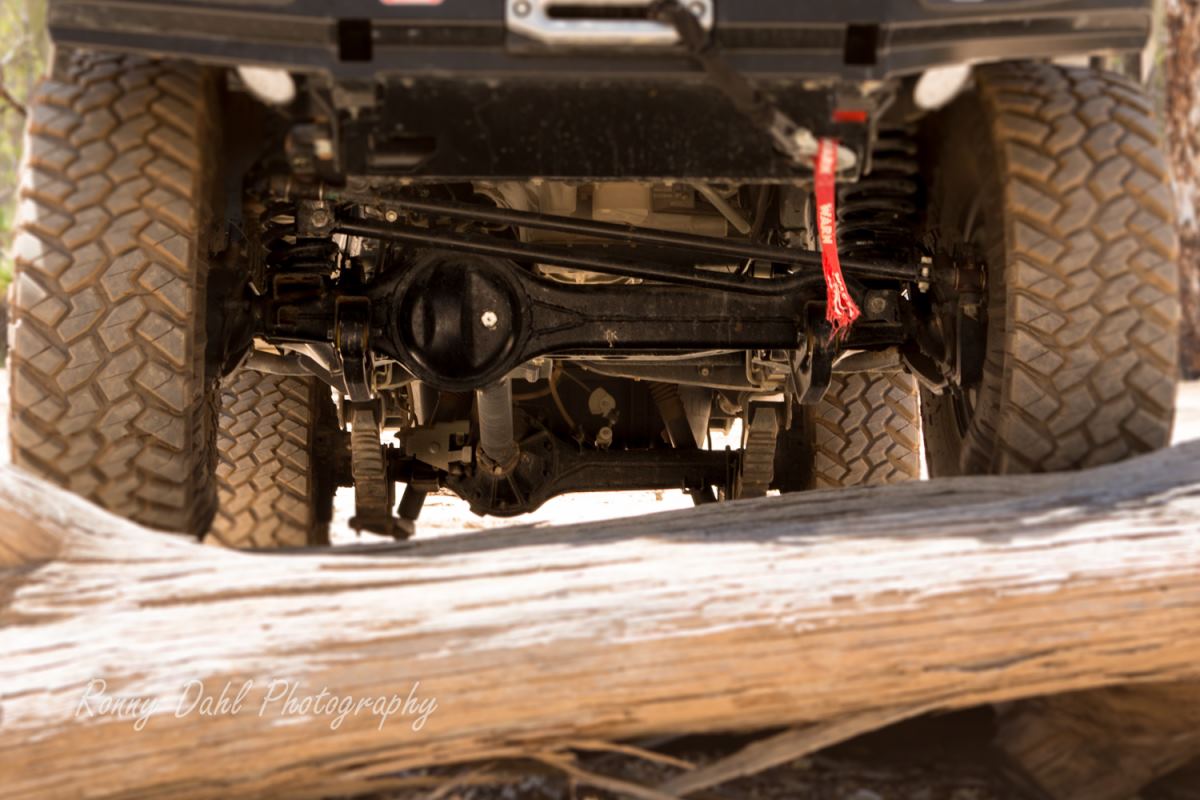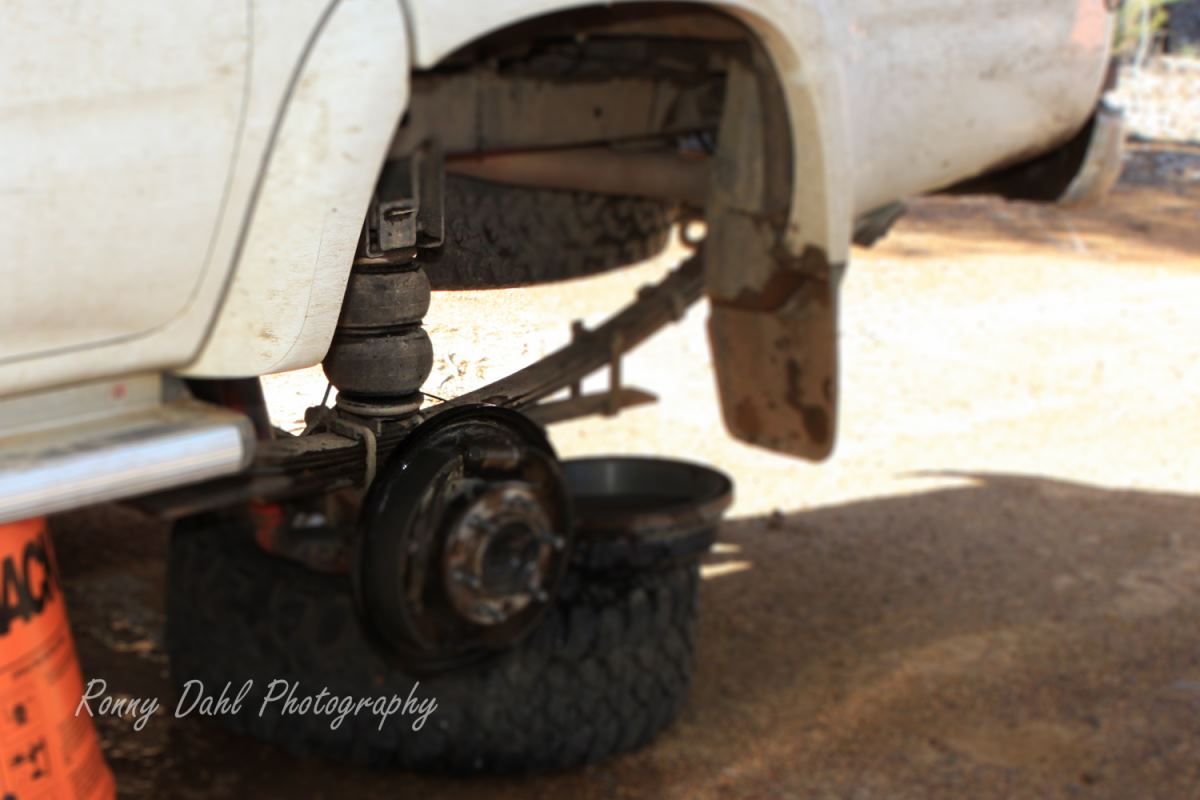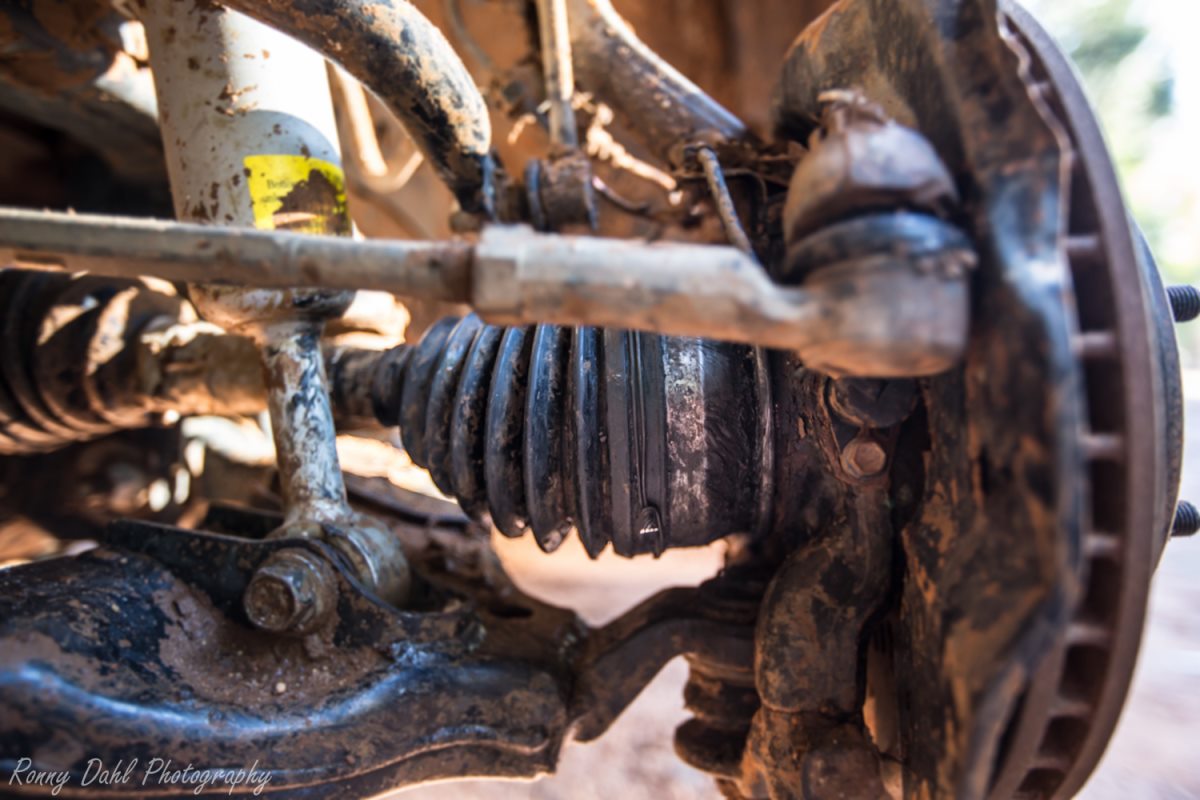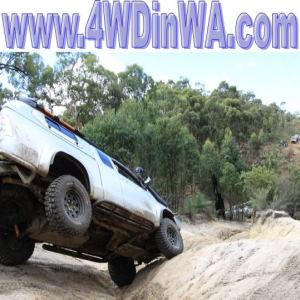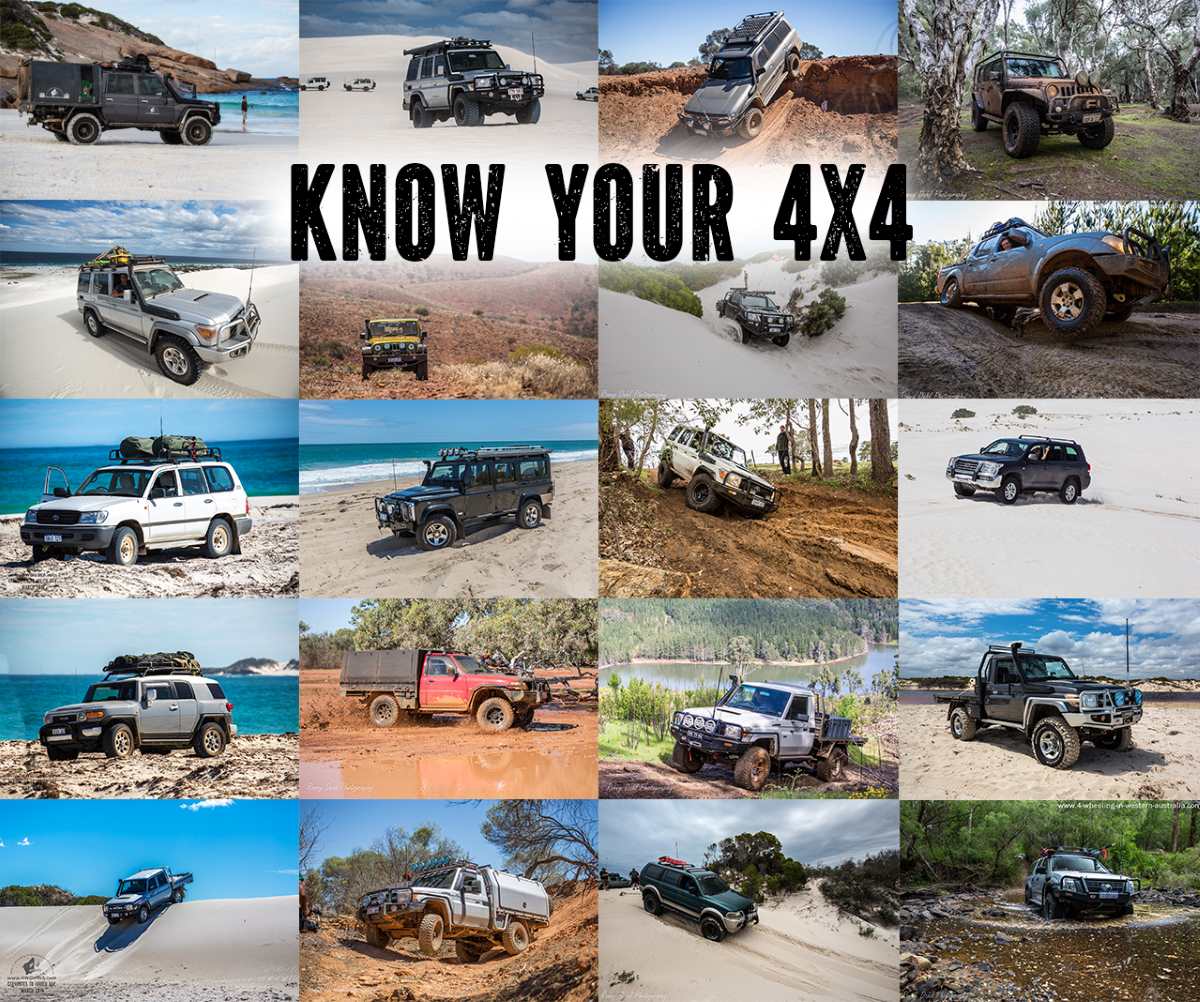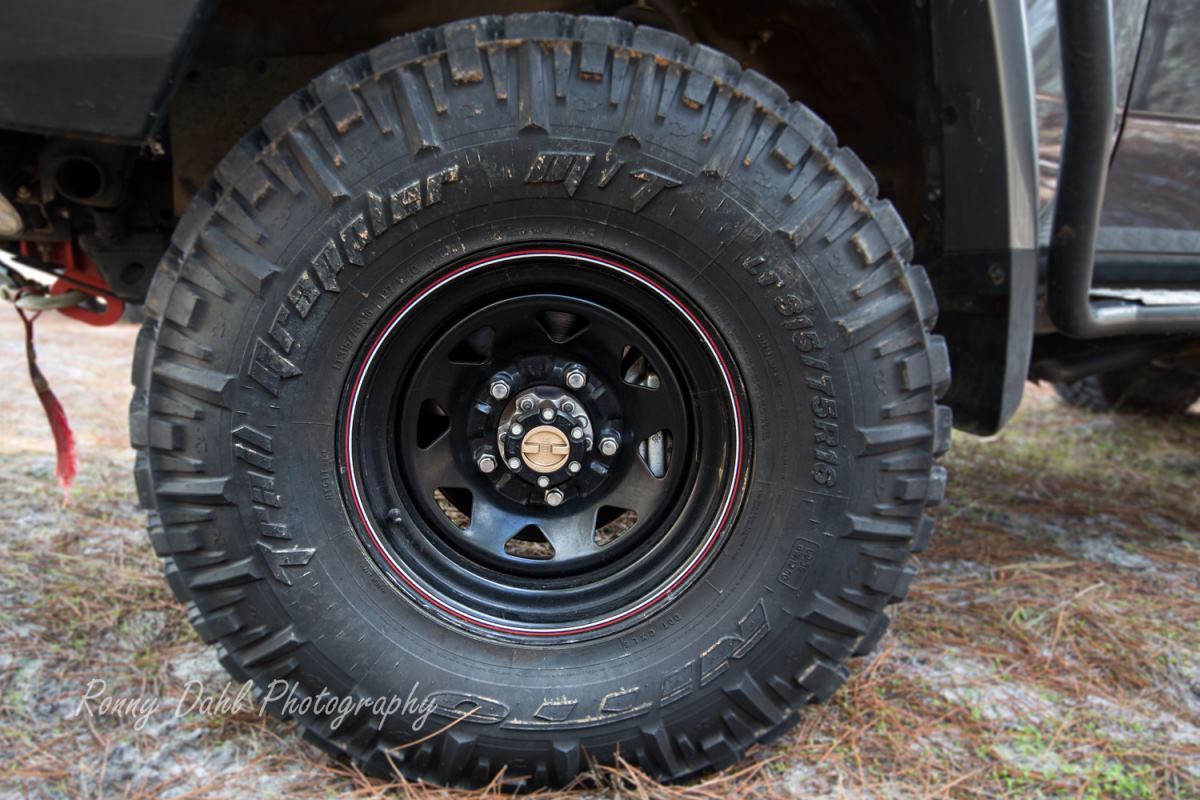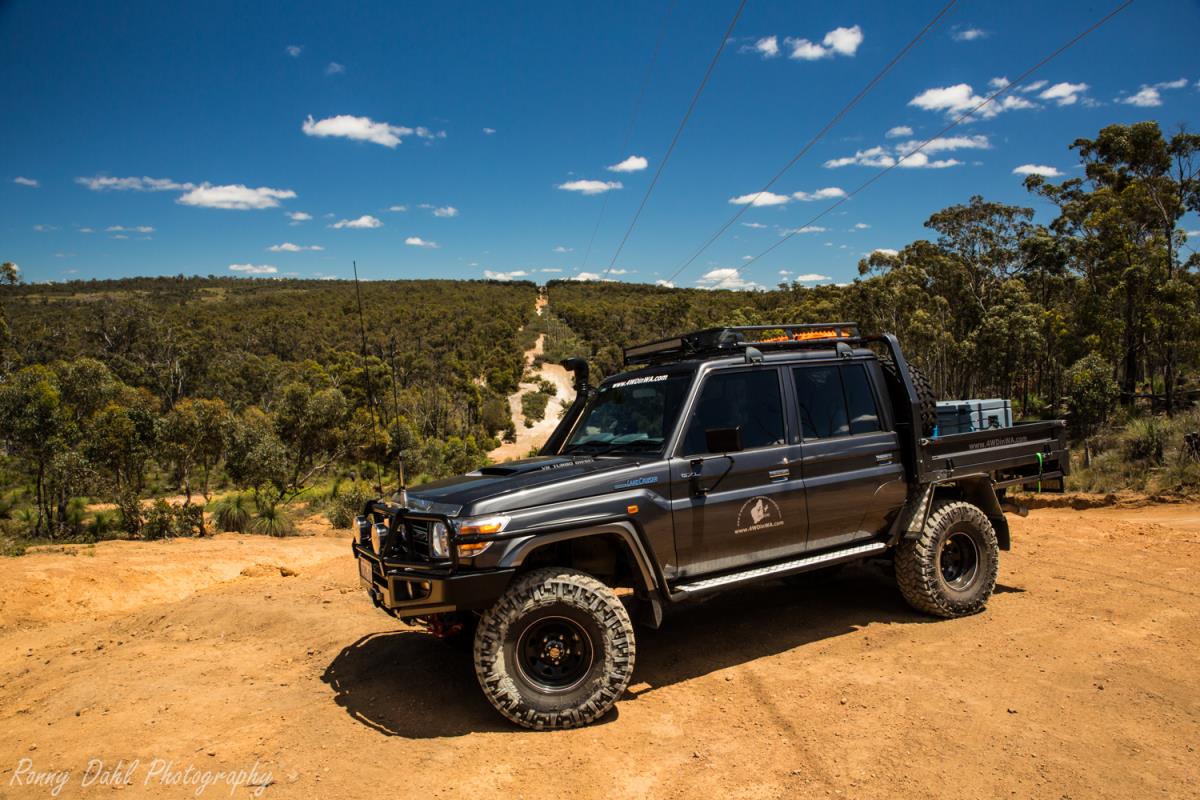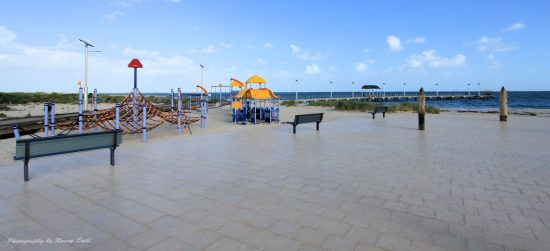
Off
Road Suspension & Lift Kits.
Independent Front Suspension or IFS Suspension.
Is the type of Off Road Suspension found
in newer model Toyota Hilux, Tacoma, Holden Rodeo, Colorado, Mitsubishi Triton,
Pajaro, Nissan Pathfinder, Navara and now even in the newer Nissan Patrol, Land
cruiser 100 & 200 series and many others not listed.
A Nissan Navara with Independent front suspension.
Independent front suspension is basically what it's called.
Suspension on either side of the 4wd acts independent to the opposite side of the front of the vehicle.
This type of Off Road Suspension is way more comfortable on and off road compared to the live axle. But unfortunately it is weaker and has less down travel than the live axle.
The weak point is the Constant-velocity joint (also known as a CV joint or simply a CV, this is really a part of the drive train but it plays a big part in off road suspension limits), at stock suspension height the CV angle is safe and with a 2inch lift kit it's still pretty safe, anything over that will cause steeper angles which the CVs are not designed for and they will be prone to breaking, usually when off road due to the uneven terrain adding stress to an already beyond reasonable CV angle.
To overcome this problem on 3 inch or higher IFS lift kit,
a diff drop kit can be added. This resets the diff to the original height
improving the angle of the Constant-velocity joints, giving them back the angle
they would have had if it was a 2inch lift.
There are some bullet proof CV joints on the market that allow for more down travel and can handle steeper angles.
This particular company also claim they will replace the CVs without question if they were to break, see more.
IFS suspension is still a very capable off road suspension and can go as far as any live axle 4 Wheel Drive. It's just how the suspension is setup and wherever it's driven hard or abused and you'd rather a Constant-velocity joint break than a diff center, as diff centers can't be fixed or replaced in the bush, a CV can be however, providing you have a spare one with you and the right know how and tools.
Live axles 4x4s break too if abused so don't let that turn you away from IFS 4wds.
Lifting
an IFS 4 wheel drive by 2 inches or 50mm is legal without the need for engineer
approval and is safely within the limits of the constant-velocity joint.
4 inches or 100mm of lift will require an engineer approval with a compliance
plate (added to the vehicle) to be legal, also as above a differential drop
bracket will be required to keep the CV joints within the limits, otherwise the
CV joints will snap at some point.
Anything higher than 4 inches may require extensive alterations, like a custom
chassis on top of the original chassis, now we are talking a lot money as
engineers will be involved as well. Would be a bit stupid to go ahead and build
something like that without a compliance plate as the cops will be all over a
vehicle modified that heavily straight away.
Live Axle or Solid Axle suspension:
Found
in older model Toyota Hilux, Tacoma, Land cruiser series 20-80 & 105,
Nissan Patrol GQ & GU, also in the older and newer Land Rovers, Jeeps and
others not listed.
Live axles are stronger and better off road but less comfortable than IFS suspension 4x4s
on and off road, also less stable on the black top.
Live axles have far superior up and down wheel travel and allow more room for
bigger tires. The extra wheel travel really makes them the best in capability
off road when it comes to off camber sections and deep ruts.
4x4 Lift kits on live axle 4x4s can be a number of different things, leaf
springs front and rear, coils front and rear and coils front with leaf springs
rear.
Leaf springs will give a rougher ride but are better at carrying loads if a few more leafs are added, this is called a heavy duty suspension and unless loaded with constant weight will be very uncomfortable off road, it will also bounce a lot when unloaded. Airbags on top of the leaf pack would be better but more expensive.
Solid Front Axle On Coils.
Coil springs give a more comfortable ride but require air bags in addition to combat big loads. It the coils are too soft the 4 wheel drive can be unstable if turning at faster speeds. Also unless heavy duty coils are used it is prone to sagging when loaded with camping gear or towing a trailer, but again this can be fixed by installing airbags.
With live axle suspension a 4 wheel drive can be lifted to 4inches generally with no problems at all, any higher than this may require steering shaft extenders and brake line extenders. Over five inches of lift will also attract the police. All lift kits over 2 inches in height require being engineered with compliance plates otherwise the vehicle is considered illegal and won't pass a traffic inspection.
A solid axle 4wd does not have the same weak points in the CV joints as the IFS type (no rubber boots or stressful angles to worry about) which means it has one less major weak point however when driven too hard or abused too often something is likely to break at some point.
Off Road Suspension Air bag:
This
modification is used for assisting vehicle loaded with a lot of weight and
vehicles towing trailers and caravans.
They work by raising the vehicle back up to the correct ride height.
Once the 4wd has been loaded with camping gear and/or have a trailer attached
the rear will sag due to the load, with off road suspension airbags you simply add air (the same
way as pumping tires up) until the ride height is raised to the desired level.
With a trailer loaded with about a combined weight of 1 ton, a PSI of around 30
should return the ride height to the original level, if the 4wd is also loaded
with a lot of cargo then a PSI of 50 or higher may be required.
On most off road suspension airbags the limit is 100 PSI and this kind of pressure would more than likely never be needed for 4wding needs.
Off road suspension airbags must always have at least 5-10 PSI even when unloaded, otherwise they could suffer damage.
With a touring 4wd that has all the accessories bolted on (this includes water
tanks, large fuel tank, and heavy bar work) you may find that a PSI of 15-30
could be the required PSI for just general driving.
Off road suspension airbags with too much air it will cause the rear end to bounce everywhere, especially if unloaded and too much air. Not to mention the ride would be horribly uncomfortable.
Airbag For Increased Weight And Towing Vehicles.
Other
Off Road suspension components:
4x4
lift kits consists of the entire parts required to complete the off road suspension.
However there are other parts available to add or change a lift kit to suit
special needs, for example on an IFS 4x4 fitting larger/wider tires may
interfere with the "upper control arm" (this components job is to
steady the wheel) this could possible interfere with a wider tyre. If this is
the case there is more than likely an aftermarket upper control arm available
to overcome this problem.
The same goes for a lot of other components, just to name a few:
Upper control arm:
What it does:
Holds the wheel in place also known as a wishbone.
After market improvements:
Different shape can allow bigger tyre fitting & can be stronger.
Upper Ball joint:
What it does:
These are attached to the upper control arm and are an important of
wheel alignment adjustment.
After market improvements:
Extended ball joints can allow more camber possibly improving the wheel alignment and down travel.
Lower control arm:
What it does:
Holds the wheel in place also known as a wishbone. It comes in contact
with the bump stop which restricts the wheel/tyre from hitting the top of the
guards or any part of the vehicle when the suspension bottoms out.
After market improvements:
Different shape can allow bigger tyre fitting, can be stronger.
Sway
bar:
What it does:
Keeps the vehicle stable on the road at high speeds, without a sway bar the vehicle will be dangerously unstable, these also restrict suspension travel, without one many more road deaths would more than likely happen.
After market improvements:
Quick disconnect pins or clips can allow the sway bar to be disabled or removed (make sure to reinstall/reconnect sway bar after off road use) and aftermarket sway bars allowing more suspension travel FOR OFF ROAD USE ONLY.
Bump stops:
What they do:
A bump stop restricts the wheel/tyre from contacting the vehicles
body, preventing damage.
After market improvements:
Depending on what the requirement is, can restrict up travel or allow more up travel and also soften/smooth bumps when bottoming out (also known as a progressive bump stop).
Constant-velocity joint or CV joint:
What they do:
These are the all-important part that drives the wheels as they
transfer the power/drive from the differential to the wheels.
CVs used on Independent front suspension vehicles.
IFS CV joints have more moving parts which make them weaker than the live axle type, as the live axle (also known as a solid axle) is a straight piece
connected to the diff at one end and connected to hub at the other.
After market improvements:
Super strong CV joints are available but they come at a cost and may need to be custom made, be careful with other aftermarket CVs as if it's cheaper than they are more than likely weaker.
Trackside Repaired CV Boot.
Recent Articles
-
Goodyear wrangler MTR
Jun 28, 24 10:27 PM
I have these on my defender 90 and my Dmax Ute. I get around 100,000 km out of them. I tried AT for one change and went back to the MTs. They are gol -
4x4 off road tracks 0 to 250 km from Perth
Nov 21, 23 07:40 PM
On this page we cover 4x4 off road tracks within a 250 km radius from Perth... -
4 Wheeling Around Jurien Bay.
Nov 21, 23 07:35 PM
Jurien Bay 4x4 tracks info and general information about the area...
- Home
- 4WD Accessories
- Off Road Suspension
Leave Off Road Suspension And Go To Home Page.
Go To 4WD Parts & Accessories.
